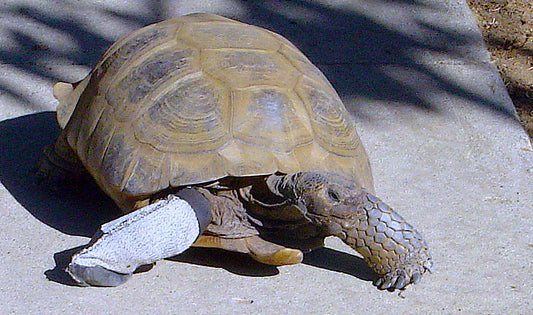Cannabidiol (CBD), a nonpsychoactive molecule derived from cannabis, is increasingly being touted as an effective treatment in humans for conditions ranging from chronic pain to anxiety to insomnia. As a result, public interest in the use of CBD on pets has also grown, industry analysts report. But whereas research on the effects of CBD in humans has been ongoing for many years, similar research on dogs, cats, and other species is just beginning. Many questions remain regarding safety, efficacy, dosage, and more.
However, that hasn’t stopped eager pet owners from turning to their veterinarians for information and advice regarding the use of CBD. In many cases, the owners have successfully used CBD to treat their own medical conditions, and believe it would be equally beneficial for their animals. This places veterinarians and veterinary nurses in a difficult position because, while the sale and use of CBD are legal in many states, the regulatory landscape for veterinary professionals is unclear and varies from state to state.
CBD is one of two major phytocannabinoids found in cannabis—the other being tetrahydrocannabinol (THC), which is the component that gets users high—says Jeffrey Powers, DVM, chairman of the American Veterinary Medical Association (AVMA) Council on Biologic and Therapeutic Agents, and owner of Veterinary Clinics North, which has clinics in East Jordan and Beaver Island, Mich. “CBD has received quite a bit of interest recently in veterinary medicine,” Dr. Powers notes. “It has been shown to be an effective analgesic, and a strong anti-inflammatory as well.”
To date, CBD research has focused primarily on seizure control and pain reduction in companion animals. In 2018, researchers at Cornell University published a study in Frontiers in Veterinary Science on the pharmacokinetics, safety, and clinical efficacy of cannabidiol in osteoarthritic dogs.1 The results showed no observable side effects and a significant decrease in pain and increase in activity based on Canine Brief Pain Inventory and Hudson activity scores.
More recently, Stephanie McGrath, MS, DVM, DACVIM (Neurology), assistant professor in the Department of Clinical Sciences at the James L. Voss Veterinary Teaching Hospital at Colorado State University in Fort Collins, investigated the potential benefits of CBD in treating idiopathic seizures in dogs, a study funded by Applied Basic Science Corporation.2 Though the study group was small—16 subjects—the results found a significant 89% reduction in seizure frequency in dogs receiving CBD at 2.5 mg/kg q12h compared to a 43% reduction in the control group. Both study groups were concurrently receiving conventional anti-epileptic drug therapy.2
“The study had a small number of dogs, so we have to be careful how much power we give it,” Dr. McGrath notes. “We have started another larger study funded by the AKC Canine Health Foundation. That allowed us to enroll a larger group of dogs, and we are doing a crossover study so every dog gets the placebo during one arm of the study and CBD during the other. If this were to show there is a significant difference when the dogs were on CBD versus not, I think that would add a lot more weight to CBD as an anticonvulsant.”
Additional studies are ongoing in a number of areas, including the use of CBD in species other than cats and dogs, but their findings won’t be available until they are completed. “From my connections in the veterinary world, I know there are studies out there that are looking to further describe the pharmacokinetics of CBD as well as look at varying doses of CBD for different conditions,” says Gary Richter, DVM, owner of Holistic Veterinary Care and Rehabilitation Center in Oakland, Calif. “They are also looking at CBD for other clinical indications beyond seizures and arthritis pain,” including anxiety.

GRAY AREA Hemp products were descheduled under the 2018 Farm Bill, but the U.S. DEA lists cannabis and cannabinoid products—under which CBD products fall—as Schedule I controlled substances. This iffy legal status can pose a significant challenge for veterinary professionals. igorstevanovic/shutterstock.com
Though clinical research is just starting to rev up, anecdotal evidence regarding the therapeutic use of CBD abounds. Dr. Powers, for example, has used it on his own pets, including a St. Bernard named Ella who was afflicted with arthritis and experienced severe storm anxiety. “I tried almost all of the products available for the treatment of those conditions, but found them ineffective,” he recalls. “I decided to try hemp CBD oil and chews and Ella has done extremely well from several standpoints. CBD may be a good alternative to NSAIDs, which can cause problems in some pets.”
Casara Andre, DVM, cVMA, founder and director of Veterinary Cannabis Education and Consulting in Wheat Ridge, Colo., is another advocate who has used CBD on her pets. Her cat Mattie was afflicted with kidney problems, inflammatory bowel disease (IBD), and arthritis. “I really didn’t have any good options for her, so I tried a CBD-dominant tincture, which offered more scalability,” Dr. Andre says. “I saw a difference, but it took about 6 weeks. I noticed small improvements in her appetite, willingness to interact, and small play attempts. When I began to incorporate a product with more even ratios of CBD to THC, I saw dramatic improvement. Mattie started eating better, playing, and no more IBD. It gave me my cat back, and gave Mattie 4 more amazing years.”
Dr. Andre used a CBD-dominant product that also contained a small amount of THC. While many pet-specific products contain CBD only, some studies have suggested that it works more effectively when paired with other molecules, such as THC.
“The problem we’re running into is that some research shows that hemp extracts, which have, say, a 1:20 THC to CBD ratio, along with other components such as terpenes and other minor cannabinoids, actually may be more effective at preventing seizures than purified extracts,” notes Dr. Powers. “I believe as a nation we need to develop more knowledge in the whole area of cannabis medicine from a widespread standpoint.”
Until recently, cannabis research has been all but impossible due to the plant’s status as a Schedule I drug, which puts it in the same category as heroin and LSD. For decades, the positions of the U.S. Drug Enforcement Administration (DEA) has been that cannabis has no medicinal value but does have a high risk of addiction and abuse. There is a movement to reclassify cannabis, and demands that the cannabis grown at the government’s only grow facility at the University of Mississippi be of the same potency as cannabis strains now available in states where medical and recreational use of cannabis is legal, such as Colorado, Oregon, and California.
The iffy legal status of cannabis across the United States can pose a significant challenge to CBD researchers who, depending on where they live and who they work for, could find their studies shut down or dramatically diminished in scope. “I’m hoping the passage of the 2018 Farm Bill [which legalized industrial hemp production and sales nationwide] will help move along some of the research by descheduling hemp, but on a state by state basis it might be a challenge,” says Dr. McGrath.
As noted, the legal issues surrounding medical cannabis also affect veterinarians, whose hands are tied by their state veterinary boards regarding even the discussion of CBD with their clients. This places veterinarians in a difficult position when it comes to harm reduction education, Dr. Richter says.
“I have people coming into my practice asking about cannabis, sometimes bringing in cannabis products they have purchased at dispensaries or online, and asking, ‘How do I give them? How much do I give?’” he reports. “My question to the veterinary medical board has been, do you honestly want me to turn those people around and send them out the door to get information from someone with no medical training, like the guy who works at the dispensary or the kid who works in the pet store? That’s a question the veterinary medical board has never been able to answer to anyone’s satisfaction. I believe that as a veterinarian I have an enormous responsibility to safeguard my patients and provide accurate information to my clients. They have put us in a position where we’re damned if we do and damned if we don’t.”
That may soon change in California thanks to AB-2215, legislation passed in 2018 that, effective January 1, 2020, allows veterinarians to legally discuss the use of cannabis with clients. The law required the state veterinary board to release guidelines confirming what veterinarians can and cannot do in regard to cannabis education (cvma.net/marijuana-and-pets).
The AVMA has expressed support for stronger research into the medical benefits of cannabis, and in July responded to a Food and Drug Administration (FDA) request for public comment on the topic with a lengthy letter outlining issues and areas of research it would like to see, including dosage, efficacy, and safety.
Former FDA Commissioner Scott Gottlieb has also publicly endorsed sensible government regulation of cannabis with the goal of better research. In September it was announced that the National Center for Complementary and Integrative Health would be funding 9 grants totaling $3 million for CBD research in humans. “The science is lagging behind the public use and interest,” explained deputy director Dr. David Shurtleff in a release. “We’re doing our best to catch up here.”
To help educate veterinary nurses about the medical use of CBD and more, Veterinary Cannabis Education and Consulting offers a veterinary cannabis counselor certification course, notes Dr. Andre. She believes strongly, however, that veterinary professionals still have an ethical obligation to educate their clients when able.
“No matter in which state they live, the ability to provide harm reduction education is implicit in being a veterinarian or any member of the veterinary profession,” she notes. “We are all in this industry to help animals stay safe, and there is so much happening in product development on the human side that we need to be able to at least say, ‘Don’t do these things. If you are going to use cannabis on your own, do it safely and avoid these particular pitfalls.’ It’s important to realize that answering a client’s question has nothing to do with the substance itself. It has to do with us keeping our oath and protecting our patients and being their advocate. Telling clients not to give their pets products containing xylitol or to be sure it’s not contaminated with pesticides—that absolutely is in the veterinarian’s domain. Education is always what we’re allowed to do.”
Author: Don Vaughan
Link: https://todaysveterinarynurse.com/articles/cbd-for-dogs-and-cats-whats-new/
1. Gamble LJ, Boesch JM, Frye CW, et al. Pharmacokinetics, safety, and clinical efficacy of cannabidiol treatment in osteoarthritic dogs. Front Vet Sci 2018;5:165.
2. McGrath S, Bartner LR, Rao S, et al. Randomized blinded controlled clinical trial to assess the effect of oral cannabidiol administration in addition to conventional antiepileptic treatment on seizure frequency in dogs with intractable idiopathic epilepsy. JAVMA2019;254(11):1301-1308.





